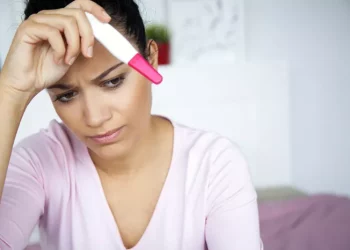Pregnancy is a time of immense change, both physically and emotionally. For many women, the journey to motherhood is filled with excitement, anticipation, and, at times, discomfort. One of the ways to alleviate some of the physical discomforts and stress associated with pregnancy is through massage therapy. However, it’s essential to understand when the best time is to get a pregnancy massage to ensure both the mother’s and the baby’s safety and well-being.
In this article, we will explore the benefits of pregnancy massage, the different stages of pregnancy and their unique considerations, and provide guidance on the best time to receive a pregnancy massage.
Benefits of Pregnancy Massage
Pregnancy massage, also known as prenatal massage, offers numerous benefits for expectant mothers. These benefits can help improve overall well-being and address specific issues related to pregnancy.
Alleviation of Physical Discomfort
As the body undergoes significant changes during pregnancy, many women experience physical discomfort, including back pain, joint pain, and muscle tension. Pregnancy massage can help alleviate these discomforts by targeting specific areas of the body that are under stress.
Reduction of Stress and Anxiety
Pregnancy can be a stressful time, with hormonal changes and the anticipation of childbirth contributing to increased anxiety levels. Massage therapy promotes relaxation and reduces stress by increasing the production of serotonin and dopamine, the body’s natural “feel-good” hormones.
Improvement of Circulation and Lymphatic Flow
During pregnancy, the body’s blood volume increases to support the growing fetus. This can lead to swelling, particularly in the legs and feet. Pregnancy massage helps improve circulation and lymphatic flow, reducing swelling and promoting overall health.
Better Sleep
Many pregnant women struggle with sleep disturbances due to physical discomfort and hormonal changes. Regular pregnancy massage can help improve sleep quality by promoting relaxation and reducing physical tension.
Preparation for Labor
Massage therapy can help prepare the body for labor by relaxing the muscles and improving flexibility. This can make the labor process smoother and less painful.
Emotional Support
Pregnancy massage provides emotional support by offering a calming and nurturing environment. This can help expectant mothers feel more connected to their bodies and their babies.
See Also: How Do I Know I’m Ovulating When I’m Not Having My Period?
Stages of Pregnancy and Massage Considerations
Understanding the different stages of pregnancy and their unique considerations is crucial when determining the best time for a pregnancy massage. Each trimester presents distinct challenges and needs, and massage therapy should be tailored accordingly.
First Trimester (Weeks 1-12)
The first trimester is a critical time for the developing fetus. During this period, the risk of miscarriage is highest, and the body is undergoing significant hormonal changes. Many healthcare providers recommend avoiding massage therapy during the first trimester due to the increased risk of miscarriage. However, if a woman is experiencing severe discomfort or stress, a gentle massage by a certified prenatal massage therapist may be beneficial. It is essential to consult with a healthcare provider before receiving a massage in the first trimester.
Second Trimester (Weeks 13-26)
The second trimester is often considered the most comfortable phase of pregnancy. The risk of miscarriage decreases, and many women begin to feel more energetic. This is an ideal time to start regular pregnancy massages. During this stage, massage therapy can help alleviate back pain, hip pain, and leg cramps, which are common as the belly grows and the center of gravity shifts. It is essential to ensure that the massage therapist is trained in prenatal massage and uses techniques that are safe for pregnancy.
Third Trimester (Weeks 27-40)
The third trimester brings increased physical discomfort as the body prepares for childbirth. Swelling, back pain, and difficulty sleeping are common complaints. Massage therapy can be highly beneficial during this stage, helping to relieve physical discomfort and promote relaxation. Special considerations should be taken during the third trimester, such as avoiding deep tissue massage on the legs to prevent blood clots and ensuring the expectant mother is comfortable during the massage.
When is the Best Time to Get a Pregnancy Massage?
Now that we have explored the benefits of pregnancy massage and the unique considerations for each trimester, let’s address the key question: when is the best time to get a pregnancy massage?
Consulting with a Healthcare Provider
Before beginning any massage therapy during pregnancy, it is essential to consult with a healthcare provider. They can provide personalized advice based on the individual’s health and pregnancy progress.
Second Trimester: The Optimal Time
The second trimester is generally considered the optimal time to begin regular pregnancy massages. During this stage, the risk of miscarriage decreases, and the body is more accustomed to the hormonal changes of pregnancy. Many women find relief from common discomforts such as back pain, hip pain, and leg cramps during the second trimester. Massage therapy can also help reduce stress and improve sleep quality during this period.
Third Trimester: Continuing the Benefits
While the second trimester is ideal for starting massage therapy, the benefits of pregnancy massage can continue into the third trimester. As the body undergoes significant changes in preparation for childbirth, regular massage can help manage physical discomfort and promote relaxation. However, it is essential to work with a certified prenatal massage therapist who understands the unique needs and safety considerations of late-stage pregnancy.
Frequency of Pregnancy Massage
The frequency of pregnancy massages depends on the individual’s needs and comfort level. Some women may benefit from bi-weekly or monthly massages, while others may prefer more frequent sessions. It is essential to listen to the body and adjust the frequency of massages accordingly.
Safety Considerations for Pregnancy Massage
While pregnancy massage offers numerous benefits, it is crucial to ensure that it is performed safely. Here are some essential safety considerations:
Choose a Certified Prenatal Massage Therapist
Always choose a massage therapist who is certified in prenatal massage. They have specialized training in the unique needs and safety considerations of pregnant women.
Avoid Certain Pressure Points
Certain pressure points, such as those in the wrists and ankles, can stimulate contractions. A certified prenatal massage therapist will know which areas to avoid.
Use Proper Positioning
Proper positioning during the massage is crucial to ensure the comfort and safety of the expectant mother. During the second and third trimesters, lying flat on the back should be avoided to prevent pressure on the vena cava, a major vein that can restrict blood flow. Side-lying positions with supportive pillows are often used to ensure comfort.
Communicate with the Therapist
It is essential to communicate openly with the massage therapist about any discomfort or concerns during the massage. This ensures that the therapy is both comfortable and effective.
Avoid Deep Tissue Massage
Deep tissue massage should be avoided during pregnancy, especially on the legs, to prevent blood clots. Gentle, soothing techniques are recommended.
Common Discomforts Addressed by Pregnancy Massage
Pregnancy massage can address a variety of common discomforts experienced by expectant mothers. Understanding these discomforts and how massage therapy can help is essential for both expectant mothers and massage therapists.
Back Pain
Back pain is one of the most common complaints during pregnancy. As the baby grows, the center of gravity shifts, and the spine can become misaligned. Pregnancy massage can help alleviate back pain by targeting the muscles and ligaments that support the spine.
Hip Pain
Hip pain is another common issue, particularly as the body prepares for childbirth. The hormone relaxin, which loosens the ligaments in the pelvis, can cause discomfort. Massage therapy can help relieve hip pain by improving flexibility and reducing muscle tension.
Leg Cramps
Leg cramps are often caused by increased pressure on the blood vessels in the legs. Pregnancy massage can help improve circulation and reduce the frequency and intensity of leg cramps.
Swelling
Swelling, particularly in the legs and feet, is common during pregnancy. Improved circulation and lymphatic flow from massage therapy can help reduce swelling.
Sciatica
Sciatica, a condition where the sciatic nerve becomes compressed, can cause pain in the lower back and legs. Pregnancy massage can help alleviate sciatic pain by targeting the muscles around the sciatic nerve.
Headaches
Headaches can be caused by hormonal changes, stress, and tension in the neck and shoulders. Massage therapy can help reduce the frequency and intensity of headaches by promoting relaxation and relieving muscle tension.
Fatigue
Fatigue is a common complaint during pregnancy, particularly in the first and third trimesters. Massage therapy can help improve energy levels by promoting relaxation and reducing stress.
Additional Tips for a Positive Pregnancy Massage Experience
To ensure a positive and beneficial pregnancy massage experience, here are some additional tips:
Hydrate Before and After the Massage
Staying hydrated is essential, particularly after a massage, as it helps flush out toxins released during the therapy.
Wear Comfortable Clothing
Wear comfortable, loose-fitting clothing to the massage session to ensure ease of movement and relaxation.
Plan for Rest Afterwards
Schedule the massage at a time when you can rest afterward. This allows the body to fully benefit from the relaxation and healing effects of the massage.
Create a Relaxing Environment
A calm and relaxing environment enhances the benefits of the massage. Soft music, dim lighting, and a comfortable room temperature can contribute to a more enjoyable experience.
Focus on Breathing
Deep breathing during the massage can help enhance relaxation and reduce stress.
Be Open to Adjustments
Every pregnancy is unique, and what works for one person may not work for another. Be open to adjusting the massage techniques, pressure, and frequency to suit your individual needs.
Conclusion
Pregnancy is a transformative and often challenging journey. Pregnancy massage offers numerous benefits that can help alleviate physical discomfort, reduce stress, and improve overall well-being. Understanding the best time to get a pregnancy massage is crucial for maximizing these benefits and ensuring the safety of both the mother and the baby.
The second trimester is generally considered the optimal time to begin regular pregnancy massages, with continued benefits into the third trimester. However, it is essential to consult with a healthcare provider and work with a certified prenatal massage therapist to ensure a safe and effective massage experience.
By addressing common discomforts such as back pain, hip pain, leg cramps, and swelling, pregnancy massage can significantly improve the quality of life for expectant mothers. With proper care and attention to safety considerations, pregnancy massage can be a valuable tool in promoting a healthy and enjoyable pregnancy.
Related Links:



























